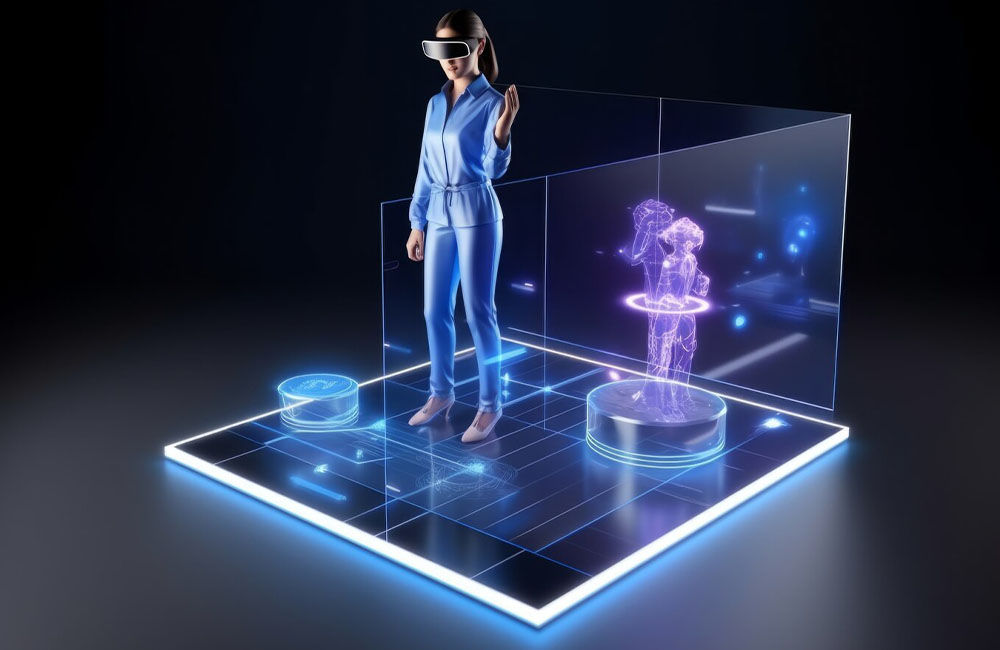In the dynamic world of marketing, companies are always looking for new methods to engage customers and make their brands stand out. Holographic marketing, which uses 3D projection technology to provide engaging and immersive brand experiences, is one new technology with huge promise in this area. Holographic projections into real-world environments allow brands to connect with customers in ways that are both novel and memorable, something that is difficult for many brands to pull off with more conventional forms of advertising.
A Guide to Holographic Advertising
Advertising using holographic pictures or films that seem to float in mid-air is made possible by 3D projection technology. Brands can now exhibit goods, tell stories, and communicate messages in a visually spectacular and engaging way using holographic projections, which offer a feeling of depth and dimension compared to typical flat-screen displays. These holographic displays are adaptable for a wide variety of advertising uses since they may be anything from little tabletop devices to massive installations.
Brands may promote their goods in a visually appealing manner with holographic marketing, creating immersive brand experiences. The use of 3D holograms in real-world settings allows companies to provide customers a “hands-on” experience by letting them virtually manipulate and examine objects from all angles.
Interactive Storytelling: Holographic projections provide a dynamic and interactive way to bring brand tales and messages to life. Businesses can engage people with immersive storytelling experiences using hologram marketing, whether it’s narrating a brand’s history, promoting its values and goal, or presenting a fascinating tale.
Live Events and Installations: Live events, trade exhibitions, and installations may be enhanced using holographic technology to provide unforgettable brand experiences. Businesses have a lot of opportunities to use holographic marketing, such as interactive exhibitions, art installations, presentations, and product debuts, to fascinate and wow audiences.
Industries such as fashion and cosmetics may take use of hologram marketing to create virtual try-on experiences. These allow customers to view how various goods look on them in real-time. Brands may provide customers a fun and interactive way to try on clothes, accessories, and cosmetics by projecting holographic pictures onto a virtual mirror.
Appealing to a Wide Range of Viewers
The unique and immersive qualities of holographic marketing might make it appealing to many different types of people. Holographic displays have the power to captivate customers of all ages, from tech-savvy millennials to more traditional populations. People under the age of 35, who have grown up with interactive and graphically rich digital experiences, might be more receptive to hologram marketing.
Prospects for the Future and Things to Think About
Holographic advertising has limitless potential as holographic technology develops further. The future of holographic marketing looks bright, thanks to developments in projection technology and the incorporation of AR and VR components, which will allow for ever more immersive and participatory experiences. Businesses considering holographic marketing should think about things like budget, technological needs, and difficulties in content production before committing to holographic displays.
In summary
The advent of holographic marketing has been revolutionary in its ability to engross and engage audiences in novel and exciting ways via the creation of immersive brand experiences. In order to stand out in today’s competitive market, companies are embracing 3D projection technology to display goods, tell stories, and communicate messages in visually captivating and unforgettable ways. Companies who get on the holographic marketing bandwagon will be in a prime position to capitalise on the growing trend of holographic advertising by providing customers with one-of-a-kind, memorable brand experiences.
